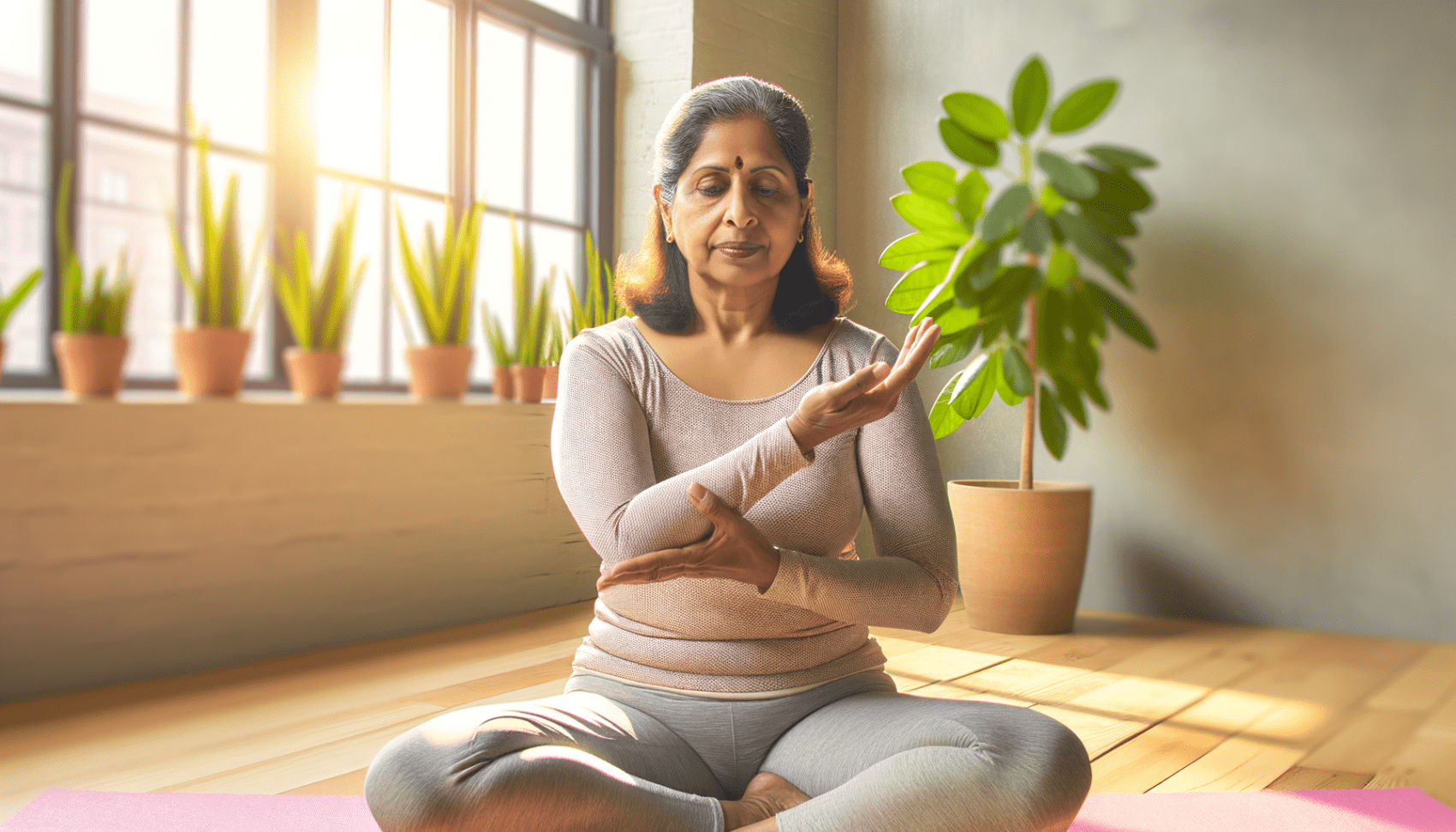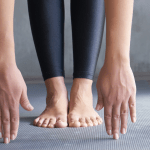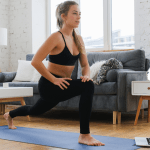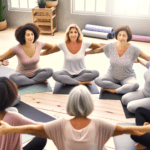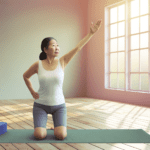Yoga as a Natural Remedy
Yoga, an ancient practice with its roots in Indian philosophy, has evolved over thousands of years to become a holistic approach to well-being. Recognized for its natural healing properties, yoga encompasses physical postures (asanas), breathing techniques (pranayama), and meditation (dhyana), offering a multifaceted remedy for various health concerns. In the context of menopause, yoga serves as a non-pharmacological intervention that can alleviate symptoms and improve quality of life without the side effects associated with hormone replacement therapy (HRT).
The Historical Context of Yoga
The practice of yoga dates back over 4,000 years, with its comprehensive philosophy documented by Patanjali Muni in the Yoga Sutras. Yoga is not confined to religion but is a way of life aimed at enhancing the physical, mental, and spiritual well-being of individuals. The eight limbs of yoga provide a framework for personal development, leading to balance and harmony within oneself and with the surrounding world.
Adaptability of Yoga for Different Physical Conditions
Yoga’s versatility allows it to be tailored to meet the unique needs of individuals with varying physical conditions. The adaptability of yoga is particularly beneficial during menopause, a time when women experience a wide range of symptoms. By selecting specific asanas and modifying practices to suit individual comfort levels, yoga can be practiced safely and effectively by women at any stage of menopause.
Yoga’s Role in Easing Menopausal Symptoms
Menopause, characterized by the cessation of menstruation, brings about a host of symptoms ranging from hot flashes and sleep disturbances to mood swings and cognitive changes. Yoga’s role in easing these symptoms is supported by numerous studies that highlight its ability to reduce stress, improve sleep quality, and enhance mood. Through a combination of asanas, pranayama, and meditation, yoga helps to shift the nervous system’s balance from the fight-or-flight response to a more relaxed state, thereby mitigating the intensity of menopausal symptoms. The practice of yoga during this transitional phase not only addresses the physical and emotional challenges but also fosters a deeper connection with the self, empowering women to navigate menopause with grace and resilience.
Understanding Menopause and Its Challenges
Defining Perimenopause and Menopause
Menopause marks a significant transition in a woman’s life, typically occurring in the late 40s to early 50s. It is defined as the cessation of menstruation for twelve consecutive months, signaling the end of reproductive capability. This period is preceded by perimenopause, a phase that can last several years, during which the body undergoes hormonal fluctuations leading up to menopause. Perimenopause is characterized by irregular menstrual cycles, changes in menstrual flow, and the onset of menopausal symptoms.
Common Symptoms and Health Concerns
Women experience a variety of symptoms during perimenopause and menopause, which can range from mild to severe. Common physical symptoms include hot flashes, night sweats, vaginal dryness, and sleep disturbances. Other health concerns that may arise are weight gain, increased risk of osteoporosis, and changes in cholesterol levels, which can affect cardiovascular health. It is important to note that each woman’s experience is unique, and symptoms can vary widely in both type and intensity.
The Psychological Impact of Menopause
The hormonal changes of menopause can also affect mental health. Many women report mood swings, irritability, anxiety, and depression. The psychological impact is compounded by sleep disruption and the stress of managing multiple symptoms. Additionally, menopause may coincide with other significant life events, such as aging, empty-nest syndrome, or caring for elderly parents, which can contribute to emotional distress.
The Importance of Managing Menopausal Symptoms
Effectively managing menopausal symptoms is crucial for maintaining quality of life. Unmanaged symptoms can disrupt daily activities, work performance, and personal relationships. Furthermore, long-term health risks associated with decreased estrogen levels, such as osteoporosis and heart disease, necessitate proactive management. Lifestyle changes, such as regular exercise, a balanced diet, and stress reduction techniques like yoga, can play a pivotal role in symptom management. For some women, hormone replacement therapy (HRT) may be considered, though it carries potential risks and should be discussed with a healthcare provider.
Restorative Yoga: A Focused Approach for Menopause
What is Restorative Yoga?
Restorative Yoga is a gentle, calming, therapeutic kind of yoga that uses props to support the body as it eases into relaxation and balance. This form of yoga is particularly beneficial during menopause, a time when a woman’s body is undergoing significant hormonal changes. Restorative Yoga focuses on releasing tension in the body and mind, promoting a state of well-being and tranquility.
The Practice and Benefits of Restorative Yoga
The practice of Restorative Yoga involves a series of poses held for extended periods, often up to several minutes. Props such as bolsters, blankets, and blocks are used to fully support the body in each pose, allowing for complete relaxation. The benefits of this yoga practice during menopause are manifold. It can help reduce stress and anxiety, improve sleep quality, and mitigate symptoms such as hot flashes and emotional fluctuations. By encouraging the body to relax deeply, Restorative Yoga also supports the body’s natural healing processes.
The Mind-Body Connection in Restorative Yoga
Restorative Yoga nurtures the connection between mind and body. This practice allows for a deep state of introspection and mindfulness, helping to soothe the nervous system. The mindful breathing and meditative aspects of Restorative Yoga can help to enhance mental clarity and emotional stability, providing a sense of groundedness that can be particularly valuable during the menopausal transition.
Shifting the Nervous System’s Balance
One of the key aspects of Restorative Yoga is its ability to shift the balance of the nervous system from the sympathetic (often referred to as the “fight or flight” response) to the parasympathetic (the “rest and digest” state). This shift is crucial during menopause, as it can help manage the body’s response to stress and create a sense of calm. By promoting relaxation and reducing the stress response, Restorative Yoga can help to alleviate menopausal symptoms and contribute to a more balanced and harmonious menopausal experience.

The Multifaceted Benefits of Yoga During Menopause
Calming the Nervous System
Menopause can be a time of heightened anxiety and stress, with the body’s natural equilibrium thrown off by hormonal changes. Yoga, with its emphasis on deep breathing and mindfulness, activates the parasympathetic nervous system, which is responsible for the body’s rest and digest functions. This activation helps to calm the nervous system, reduce stress levels, and promote a sense of tranquility. Practices such as Pranayama (breath control) and Savasana (corpse pose) are particularly effective for inducing relaxation and reducing the physiological symptoms of stress.
Enhancing Mood and Emotional Well-being
The hormonal fluctuations of menopause can lead to mood swings and emotional distress. Yoga serves as a powerful tool for enhancing mood and emotional well-being. Through the combination of physical postures (asanas), breathwork (pranayama), and meditation, yoga helps to release endorphins, often referred to as “feel-good” hormones. This release can improve mood and foster a sense of well-being, helping to counteract feelings of irritability and depression that may accompany menopause.
Improving Muscle Mass and Strength
As estrogen levels decline during menopause, women may experience a decrease in muscle mass and strength. Yoga poses, particularly weight-bearing asanas like Warrior II (Virabhadrasana II) and Tree Pose (Vrikshasana), help to build and maintain muscle mass. This not only aids in weight management but also contributes to overall physical strength, which is crucial for maintaining an active and healthy lifestyle during and after the menopausal transition.
Assisting with Sleep Quality
Many women experience sleep disturbances during menopause. Yoga can significantly improve sleep quality through its stress-reducing and relaxation-inducing effects. Restorative poses like Legs Up the Wall (Viparita Karani) encourage the body to enter a state of deep relaxation, which can lead to better sleep. Additionally, the meditative aspects of yoga can help still the mind, making it easier to fall asleep and stay asleep.
Managing Hot Flashes
Hot flashes are one of the most common and disruptive symptoms of menopause. Certain yoga practices can help in managing hot flashes. For instance, Sitali Pranayama (cooling breath) is a breathing technique that can create a cooling effect on the body, providing relief from the heat of hot flashes. Moreover, gentle forward bends and restorative yoga poses can help regulate body temperature and reduce the frequency and intensity of hot flashes.
In conclusion, yoga offers a holistic approach to managing the complex symptoms of menopause. By incorporating regular yoga practice into their lives, women can experience a range of benefits that support their physical, emotional, and mental health during this significant life transition.
Yoga’s Impact on Physical Health and Quality of Life
Improving Flexibility and Mobility
One of the most celebrated benefits of yoga is its ability to enhance flexibility and mobility. As individuals age, joints and muscles can become less pliable, leading to stiffness and a reduction in the range of motion. Yoga’s asanas (postures) gently stretch the muscles and joints, maintaining or even increasing flexibility. This is particularly beneficial during menopause, a time when women may begin to experience a natural decrease in flexibility. Regular yoga practice can help to counteract this trend, promoting ease of movement in daily activities and potentially reducing the risk of injury.
Reducing the Risk of Falls and Fractures
Menopause is often accompanied by a decrease in bone density, which can increase the risk of falls and fractures. Yoga, with its emphasis on balance and strength, can be an effective way to mitigate these risks. Studies have shown that yoga improves balance and proprioception – the sense of where the body is in space. By enhancing these abilities, yoga can help menopausal women maintain stability and coordination, reducing the likelihood of falls. Furthermore, weight-bearing yoga poses can help to maintain or increase bone density, providing a protective effect against fractures.
Enhancing Overall Quality of Life
The practice of yoga offers more than just physical benefits; it can also significantly enhance overall quality of life. By combining physical postures with breathing exercises and meditation, yoga addresses the mind-body connection, promoting relaxation and stress reduction. For menopausal women, who may experience mood swings, anxiety, and depression, the calming effects of yoga can be particularly valuable. Additionally, the community aspect of yoga classes can provide social support, which is an important factor in overall well-being. The sense of accomplishment and empowerment that comes from mastering new poses or improving in practice can also boost self-esteem and body image, contributing to a more positive outlook on life.
In conclusion, yoga offers a holistic approach to managing the physical and psychological challenges of menopause. By improving flexibility and mobility, reducing the risk of falls and fractures, and enhancing overall quality of life, yoga can be a powerful tool for women navigating this transitional period. With its adaptability to various fitness levels and its focus on individual experience, yoga is a practice that can support women’s health and well-being through menopause and beyond.
Recommended Yoga Poses for Menopause
Working with a Qualified Yoga Instructor
Embarking on a yoga journey during menopause can be both empowering and therapeutic. However, it is essential to work with a qualified yoga instructor who can guide you through poses that are specifically beneficial for menopausal symptoms. A knowledgeable instructor can provide modifications and props to ensure your practice is safe, effective, and tailored to your body’s needs. They can also help you navigate any discomfort or challenges that arise, allowing you to gain the full benefits of yoga during this transitional phase of life.
Specific Poses for Alleviating Menopausal Symptoms
Yoga offers a variety of poses that can help alleviate the common symptoms associated with menopause. These symptoms include hot flashes, mood swings, sleep disturbances, and muscle loss. Certain poses have been found to be particularly helpful in managing these issues by promoting relaxation, improving circulation, and strengthening the body. It is important to listen to your body and avoid any movements that cause pain or discomfort.
Examples of Beneficial Yoga Poses
- Shoulderstand (Salamba Sarvangasana): Known for calming the brain and relieving stress, this inversion also stretches the shoulders and neck, tones the legs and buttocks, and can improve digestion.
- Marichi’s Pose (Marichyasana A): This seated twist calms the brain, stretches the spine and shoulders, and is beneficial for digestion.
- Head-to-Knee Forward Bend (Janu Sirsasana): A calming pose that stretches the spine, shoulders, hamstrings, and groins, and also aids in digestion.
- Reclining Bound Angle Pose (Supta Baddha Konasana): This restorative pose decreases muscle tension, relieves fatigue, and stretches the inner thighs, groins, and knees.
- Downward-Facing Dog (Adho Mukha Svanasana): An energizing pose that calms the brain, stretches the body, and can help prevent osteoporosis.
- Reclining Hero Pose (Supta Virasana): Stretches the abdomen, thighs, and deep hip flexors, and improves digestion.
- Bridge Pose (Setu Bandha Sarvangasana): This gentle backbend stretches the chest, neck, and spine, and can alleviate stress and mild depression.
- Wide-Legged Forward Bend (Prasarita Padottanasana): Strengthens and stretches the legs and spine, tones the abdominal muscles, and calms the brain.
It is advisable to start with gentle poses and gradually move to more advanced ones as your body becomes accustomed to the practice. Incorporating props such as blankets, blocks, and straps can provide additional support and enhance the effectiveness of the poses.
Remember, the key to a successful yoga practice during menopause is to maintain a sense of patience and self-compassion. Allow yourself to experience the full range of benefits that yoga has to offer by approaching each session with an open mind and a willingness to adapt the practice to your body’s unique needs during this time.

Bette 100% All-Natural Relaxing Lavender Body Lotion.
Chemical-Free
Your relaxing night time body moisturizer to leave the day’s stress behind. Decompress and wish your body good night with the calming scent of lavender.
Conclusion: Embracing Yoga for Menopausal Well-being
The Importance of Personalized Yoga Practice
As we have explored throughout this article, yoga offers a sanctuary of relief and empowerment for women navigating the waves of menopause. However, it is crucial to recognize that each woman’s experience of menopause is as unique as her fingerprint. Therefore, personalized yoga practice is not just beneficial but essential. Tailoring yoga sessions to individual needs, limitations, and goals ensures that the practice is both safe and effective. A personalized approach can address specific symptoms, such as hot flashes or mood swings, and adapt to the day-to-day fluctuations in energy and comfort levels that are common during menopause.
Seeking Knowledgeable Instructors
While personal practice is valuable, the guidance of a knowledgeable yoga instructor can be transformative. A skilled teacher can offer modifications, props, and adjustments to accommodate the changing needs of a menopausal body. They can also provide emotional support and create a nurturing environment for women to share experiences and strategies. Instructors with experience or training in yoga for menopause can be particularly helpful, as they understand the nuances of this life stage and can guide women through practices that promote hormonal balance, emotional stability, and overall well-being.
The Bottom Line on Yoga and Menopause
In conclusion, yoga stands out as a holistic and adaptable practice that can significantly enhance the quality of life for women during menopause. Its multifaceted benefits extend beyond physical relief, fostering emotional resilience and mental clarity. The practice of yoga during menopause is not about striving for the perfect pose but rather about finding a harmonious balance within the body and mind. Embracing yoga means embracing a journey of self-care, where the focus is on nurturing oneself with kindness and patience.
Ultimately, the bottom line is clear: yoga is a powerful ally in the menopausal journey. It offers a pathway to navigate this natural transition with grace, strength, and a sense of peace. Whether through restorative poses that soothe the nervous system, dynamic sequences that build strength and flexibility, or mindful breathing practices that center the mind, yoga provides a foundation for health and happiness during menopause and beyond.
For those ready to embark on this path, remember to honor your body’s wisdom, seek out experienced instructors, and cultivate a practice that resonates with your individual needs. With these principles in mind, yoga can be a source of enduring support and vitality during menopause, helping women to thrive in this new chapter of life.

